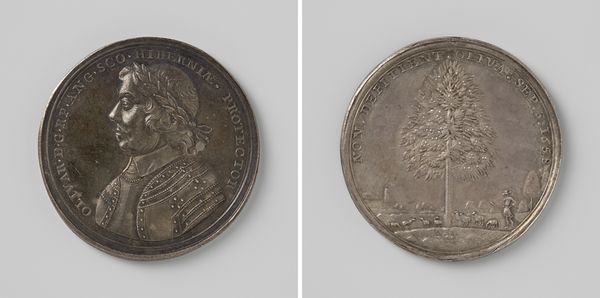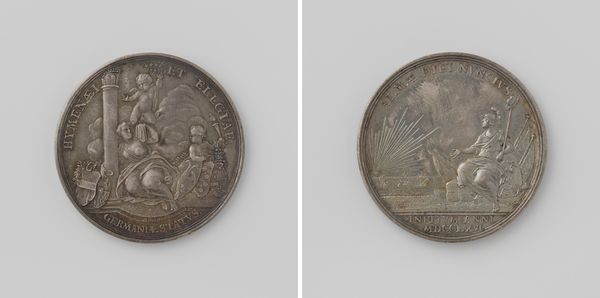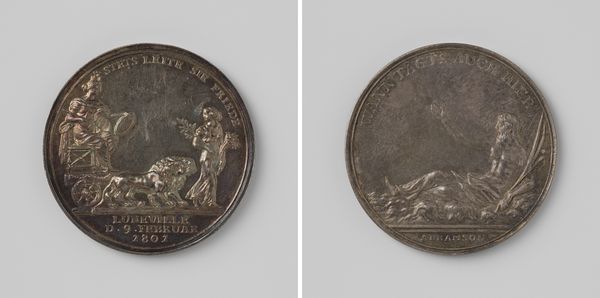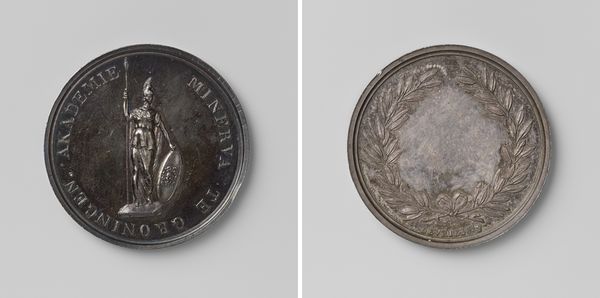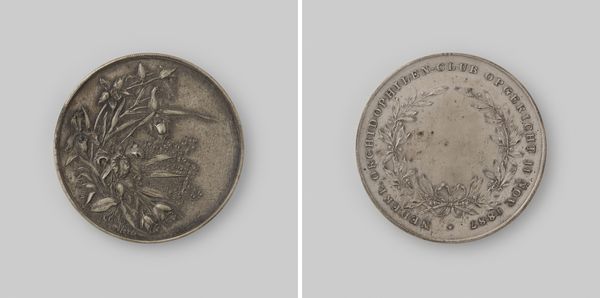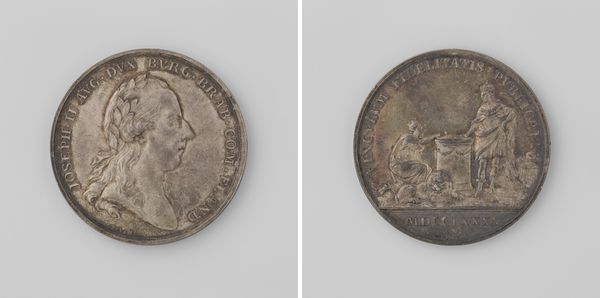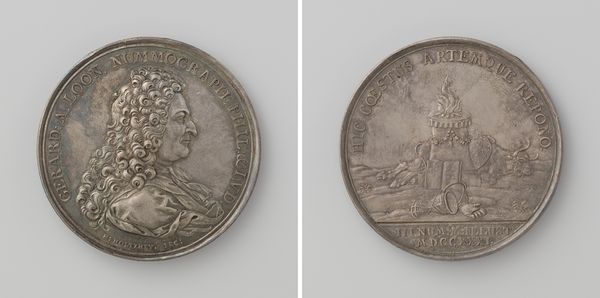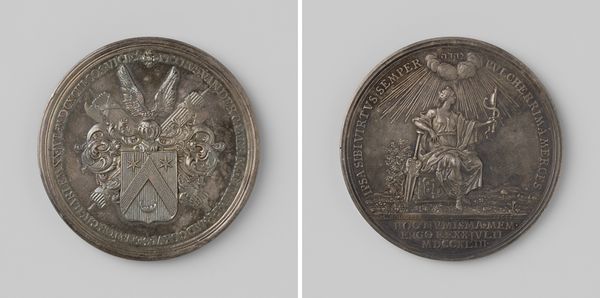
Opening van het Noordzeekanaal, ter ere van Willem III, koning der Nederlanden, penning geslagen op last van de Amsterdamsche Kanaal Maatschappij 1876
0:00
0:00
print, metal, sculpture, engraving
#
portrait
# print
#
metal
#
sculpture
#
sculpture
#
ceramic
#
history-painting
#
engraving
#
statue
Dimensions: diameter 5.1 cm, weight 384 gr
Copyright: Rijks Museum: Open Domain
Curator: We're looking at a medal commemorating the opening of the North Sea Canal in 1876. It was commissioned by the Amsterdam Canal Company and designed by Edouard Louis Geerts. Editor: My first impression is how detailed the engraving is for such a small object; the textures on the portrait and the depth in the nautical scene are incredible. Curator: Absolutely, it's fascinating to consider how these medals functioned as both commemorative objects and instruments of civic pride. The construction of the North Sea Canal was a monumental feat of engineering, a project heavily supported and funded by Amsterdam. This medal broadcasted that achievement. Editor: The profile portrait of King Willem III has a classical, almost Roman quality to it. See how his beard and features are rendered with such precision. This side of the coin also serves a functional purpose. All the text provides more than the history. The design uses visual rhythm as a technique to attract the eye, in contrast with the crowded tableau on the opposite side. Curator: Yes, that classical profile would deliberately align Willem III with a lineage of powerful rulers. Notice how the reverse side depicts the King, along with other figures in ceremonial garb on what appears to be a vessel navigating the newly opened canal? It’s staged, but the symbolic importance cannot be denied. It reinforced his authority while promoting the progressive idea of improved infrastructure. Editor: The crowded, asymmetrical composition creates a sense of energy and movement, even in this static image. However, the execution looks a bit stiff – not helped by how shallow the depth appears, though this may well be a necessary product of the medium. Curator: I agree about the medium playing a significant role. But I am more intrigued by what isn’t depicted. There’s no visual reference here to the intense labor required or to the communities that were impacted during construction, and such omission indicates how narratives around progress and modernization tend to bury complicated histories. Editor: True. So, through form and function, it reflects a specific historical moment and illuminates how societal achievements get branded in very particular ways. Curator: Precisely. It reminds us that even seemingly simple objects like this are embedded with complex social and political meaning.
Comments
No comments
Be the first to comment and join the conversation on the ultimate creative platform.

